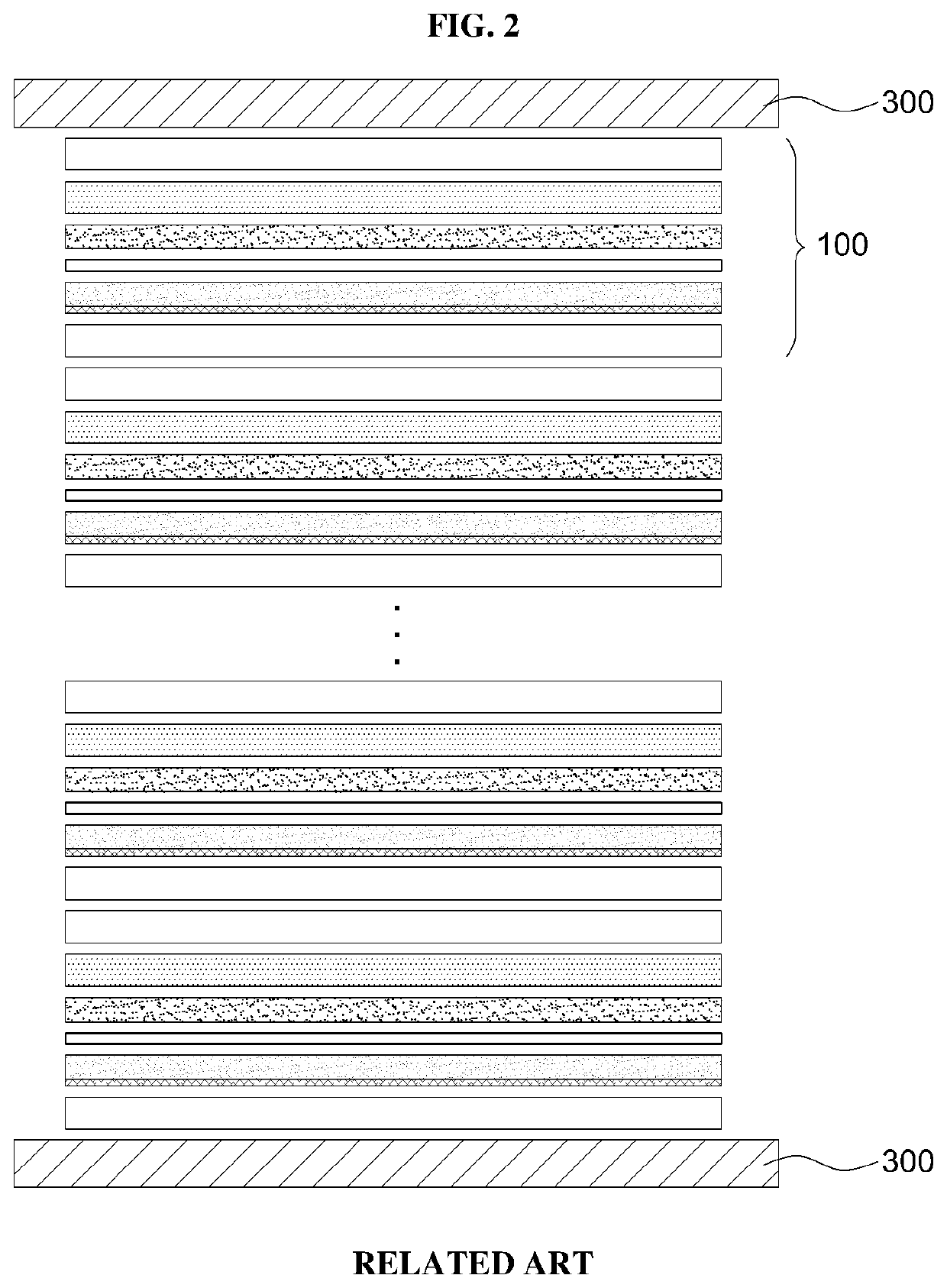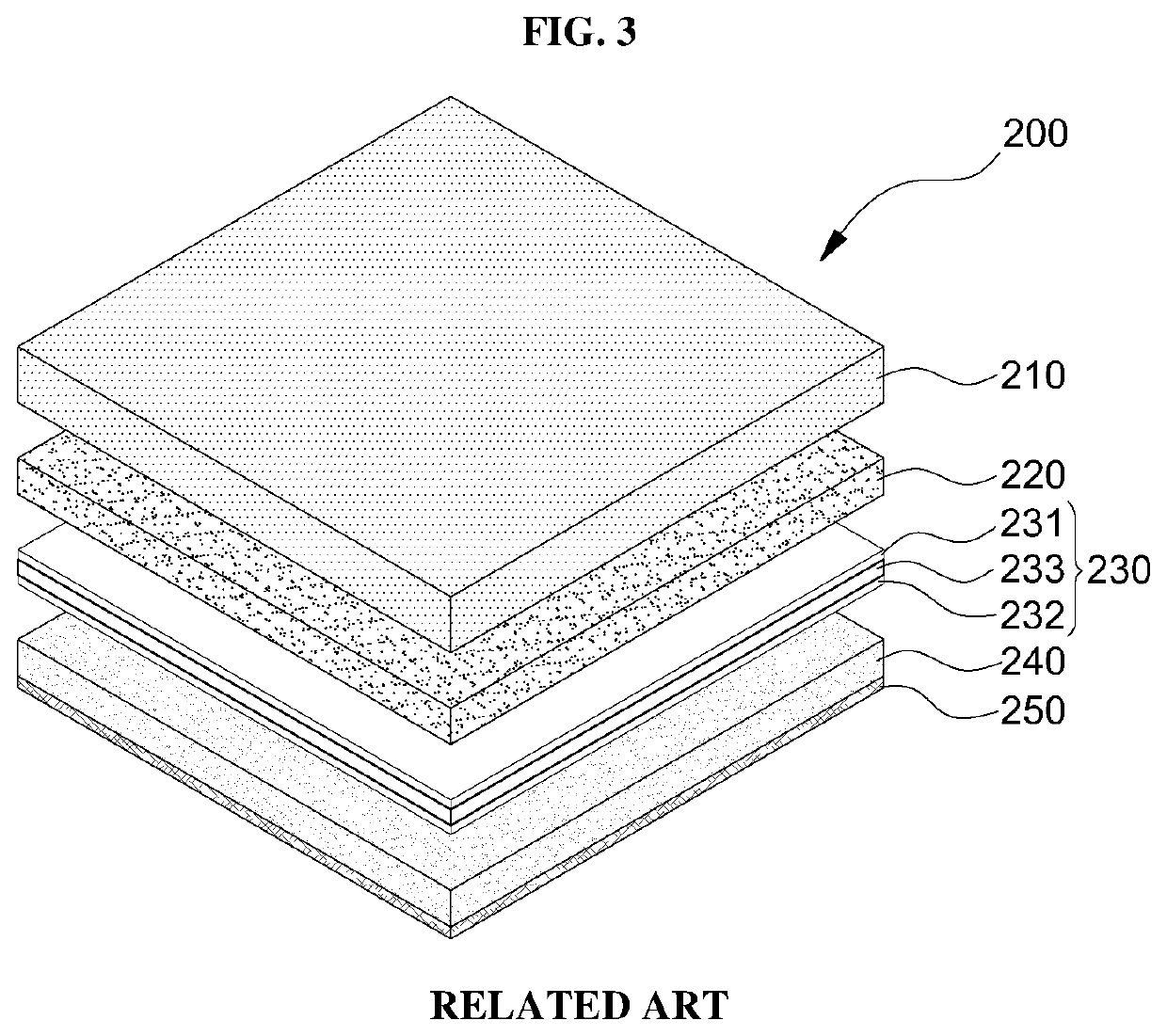Lithium-air battery and method of manufacturing the same
a lithium-air battery and battery technology, applied in the field of lithium-air batteries, can solve the problems of battery weight reduction, difficulty in realizing high energy density of lithium-air batteries, and difficulty in reducing battery weight and improving battery energy density, so as to reduce weight, eliminate bipolar plates, and improve energy density
- Summary
- Abstract
- Description
- Claims
- Application Information
AI Technical Summary
Benefits of technology
Problems solved by technology
Method used
Image
Examples
example
[0083]Hereinafter, the present invention will be described in more detail with reference to the following embodiments. However, the present invention is not limited thereto.
embodiment 1
[0084](1) Preparation of First Gel Polymer Electrolyte Slurry
[0085]In order to prepare the first gel polymer electrolyte slurry, which contacts the cathode 220, polymethyl methacrylate was used as the polymer. A solution in which 1M LiNO3 was mixed with a DMAc solvent was used as the first electrolyte, and 2,2′-azo-bisisobutyronitrile (AIBN) was used as the initiator. Divinylbenzene (DVB) was used as the crosslinking agent. The first gel polymer electrolyte slurry was prepared by mixing 21% by weight of the polymer, 75% by weight of the first electrolyte, 1% by weight of the initiator, and 3% by weight of the cros slinking agent.
[0086](2) Preparation of Second Gel Polymer Electrolyte Slurry
[0087]In order to prepare the second gel polymer electrolyte slurry, which contacts the anode 240, polyvinylidene fluoride was used as the polymer. A solution in which 1M LiTFSI was mixed with a DEGDEE solvent was used as the second electrolyte, and 2,2′-azo-bisisobutyronitrile (AIBN) was used as ...
embodiment 2
[0090]A lithium-air battery was manufactured in the same manner as in Embodiment 1, except that the following components were used. In the preparation of a first gel polymer electrolyte slurry, polymethylmethacrylate-co-polystyrene (PMMA-PS) was used as a polymer. Polyethylene was used as a separation membrane.
PUM
 Login to View More
Login to View More Abstract
Description
Claims
Application Information
 Login to View More
Login to View More - R&D
- Intellectual Property
- Life Sciences
- Materials
- Tech Scout
- Unparalleled Data Quality
- Higher Quality Content
- 60% Fewer Hallucinations
Browse by: Latest US Patents, China's latest patents, Technical Efficacy Thesaurus, Application Domain, Technology Topic, Popular Technical Reports.
© 2025 PatSnap. All rights reserved.Legal|Privacy policy|Modern Slavery Act Transparency Statement|Sitemap|About US| Contact US: help@patsnap.com



